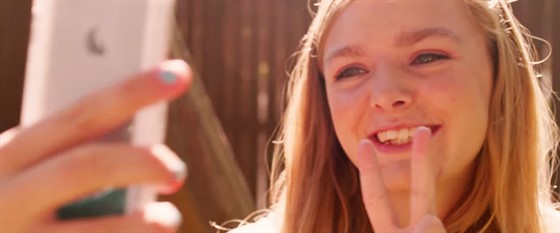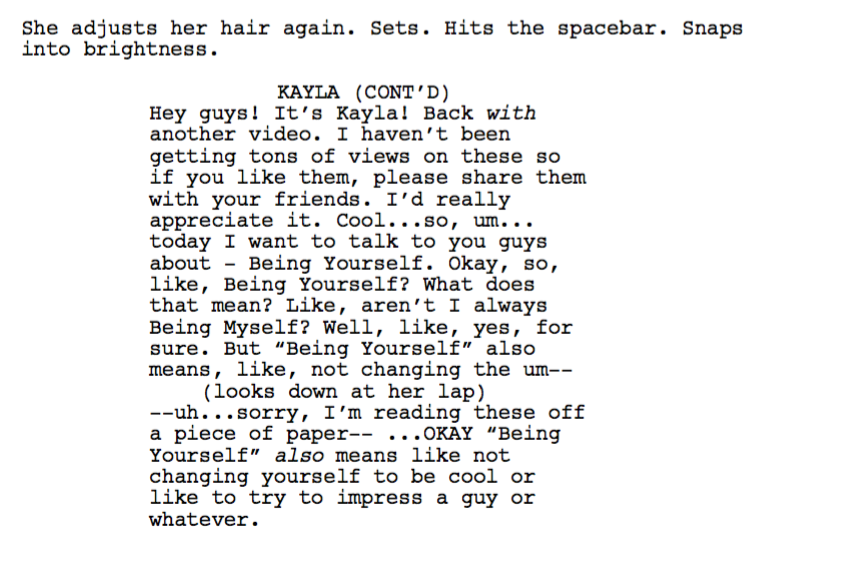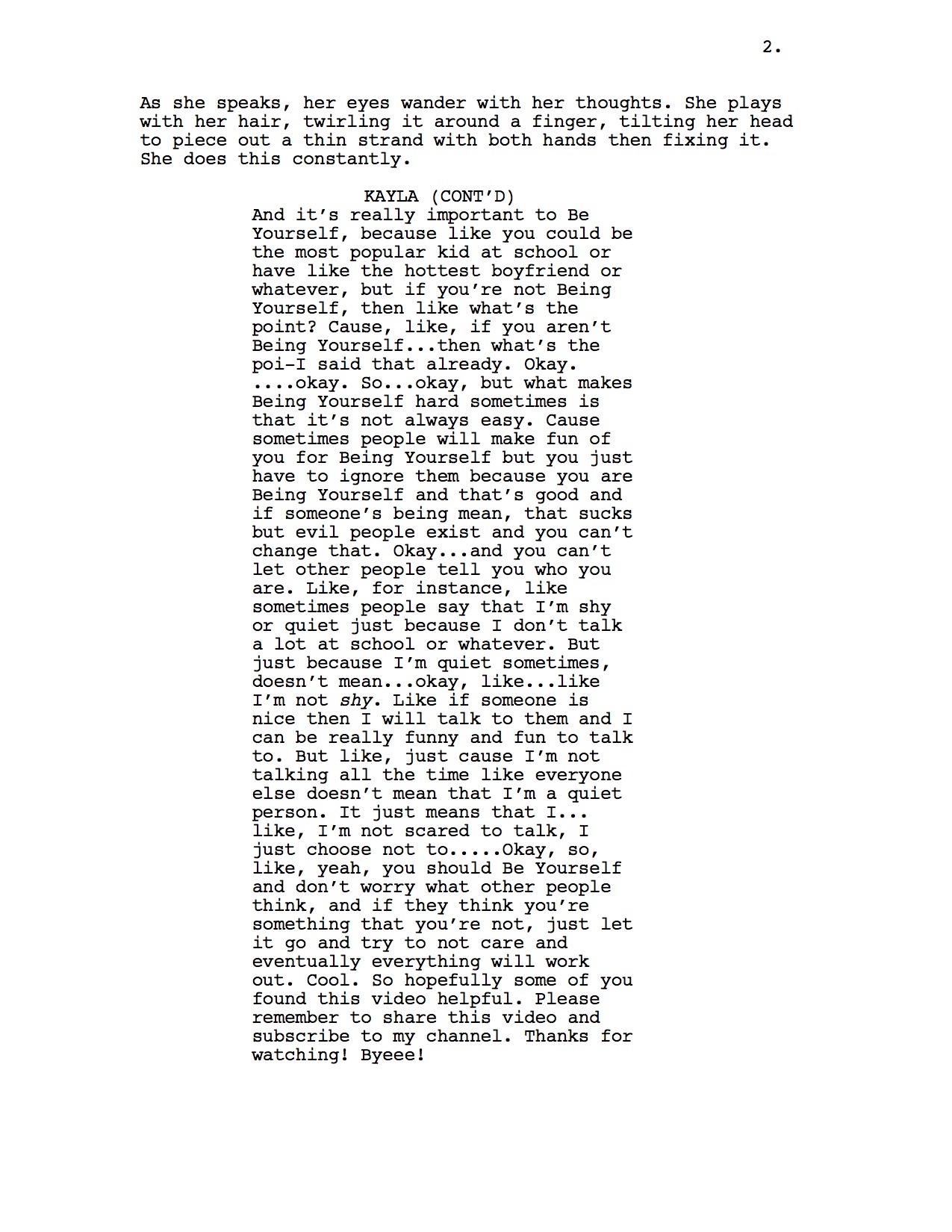While we’re still caught in a wave of summer releases, Jorge takes a look at the script for what has become the indie comedy darling of the moment.

Capturing the essence of a teenager on screen is not easy. Since most screenwriters are decades removed from that time in their lives when they develop their scripts, the language and sentiment around it can feel removed or separate from reality. If this was true during the teen comedy heyday of the 80s, it’s even truer today, when the quickly evolving culture and technology make even a couple years’ difference a generational gap with young people...
Bo Burnham did not have an easy task trying to recreate the voice of a middle school girl in 2018. But he manages to capture almost effortlessly the pain and angst of being a teenager today, though thanks largely to Elsie Fisher. Let’s take a look at Kayla’s opening vlog, and what devices Burnham uses to capture the feelings of angst and insecurity in the YouTube generation.
Eighth Grade
Written by: Bo Burnham
Kayla is first introduced to us via a video recording, part of a series that she uploads almost every day in an attempt to reach validation through an online audience (and honestly…same). She is recording a video about “Being Yourself”, a theme that will become the emotional center of the entire movie. Right away, Burnham is telling us that Kayla is someone that wishes to put herself out there, but has to put a filter through herself first.
I usually like to talk in these articles about the way characters are described, how scenes are structured, or when the thematic links appear in the script. For Eighth Grade, though, a big block of dialogue: a two-page monologue that Kayla delivers to the camera. It's a perfect representation of not only her character, but her generation.


The entire vlog is written on almost a single paragraph, broken only by a small description of Kayla’s body language. It reads like a rambling, semi-coherent speech. Except for the spare use of some italics, dashes and ellipses, there is no indication of how it should be delivered, in what tone, or with what speed. It all sits on the page as one giant block.
Burnham breaks up the sentences and has Kayla repeat herself and trip her words, reflecting her insecurity and awkwardness. True emphasis is given to verbal crutches like “okay,” “or whatever…,” “so…,” “um” and the perennial “like,” which is both another sign of Kayla’s self-doubt, and an interchangeable word in youth slang that adds a layer of veracity.
But what makes this character introduction a real emotional thesis for the film and makes it carry such important weight, is the way Elsie Fisher takes the words and fills them up with all the angst, fear, and facades that a teenage girl puts forward to the world. Fisher fills in the blanks of this speech with body language, eye contact, and voice. She’s trying so hard to deliver this in an earnest way, and failing, and she knows she’s failing. She doesn’t believe anything she is saying, but wants desperately to.
Burnham took the words of what a teenager would very plausibly say to a world that’s always ready to listen, but Fisher made them real and emotional. Watching this makes us ache for the years that are ahead for Kayla, but also hopeful because we know she will get through them mostly unscathed.